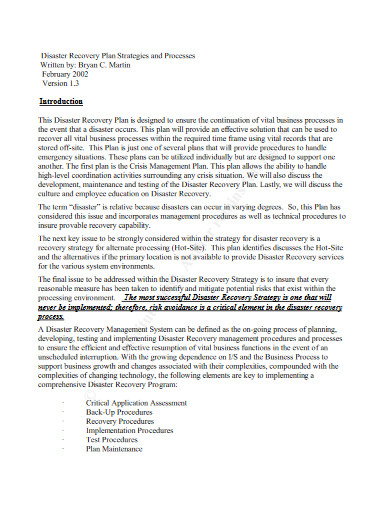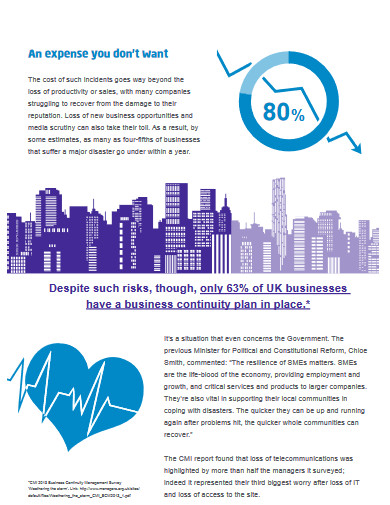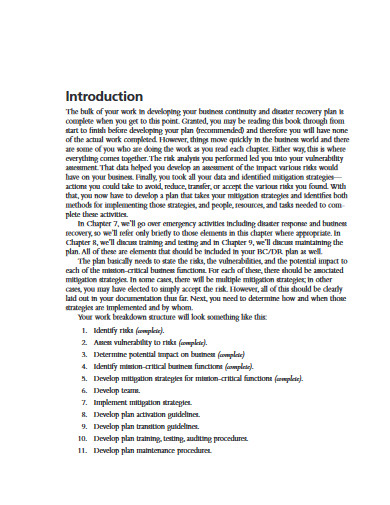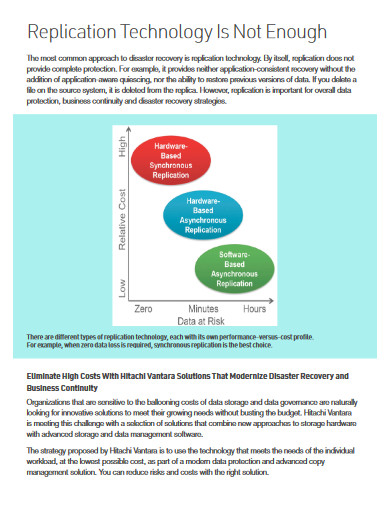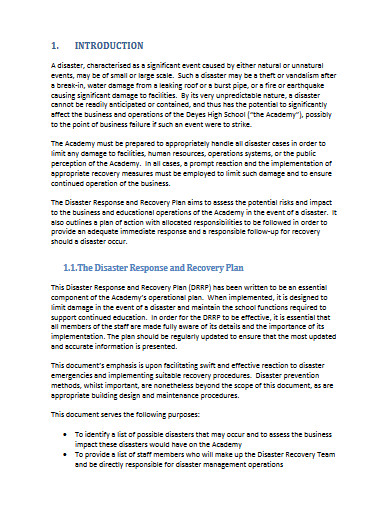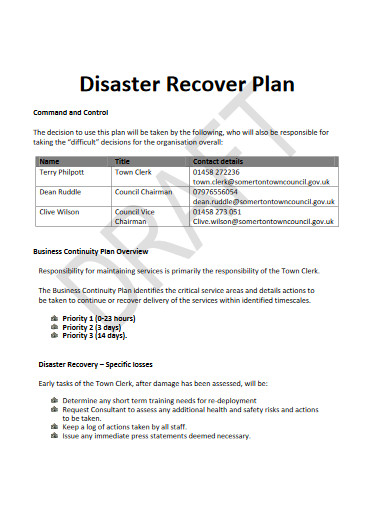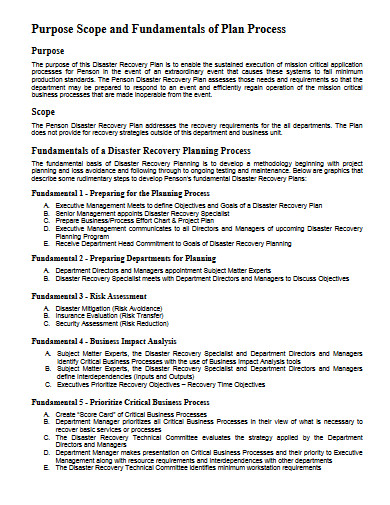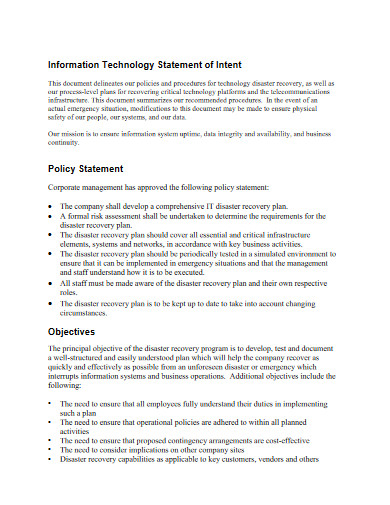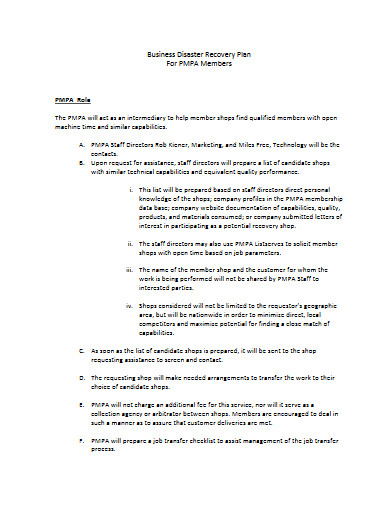10+ Disaster Recovery Plan Examples to Download
Disasters can happen at any time. Sometimes with prior warning, and sometimes without prior warning. When they do strike, unfortunately, it could mean the end of your business. The Federal Emergency Management Agency says that around 40% to 60% of small businesses were unable to reopen after a disaster. As a business person, you should be alarmed about that, even if your business isn’t small. Every organization is vulnerable to disasters if they’re unprepared for them. So before they come, you need to have an action plan to ensure your business will survive. And that action plan is our Disaster Recovery Plan Examples. You can view and download them below!
10+ Disaster Recovery Plan Examples
1. Disaster Recovery Plan Template
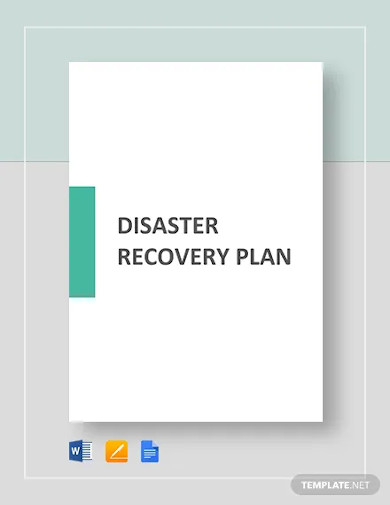
2. Disaster Recovery Plan Strategies
3. Disaster Recovery Plan Development
4. Business Disaster Recovery Plan
5. Disaster Recovery Plan Example
6. Sample Disaster Recovery Plan
7. Disaster Response and Recovery Plan
8. Disaster Recover Plan in PDF
9. Disaster Recovery Plan For Business
10. IT Disaster Recovery Plan
11. Business Disaster Recovery Plan Format
What Is a Disaster Recovery Plan?
A disaster recovery plan consists of strategies or corrective actions to put a business back on its feet after a calamity or incident. It enables a business to repair assets damaged by a disaster or retrieve them if they were lost. Without established disaster recovery plan steps, a business will essentially have no means of operating normally again. And that could lead to bankruptcy and closure.
Business people like you should formulate a disaster recovery plan. You should do so even if there aren’t any signs of an impending catastrophe. Take note that sometimes disasters occur out of the blue, catching your organization off guard. But if you have an existing disaster recovery plan, you’ll have a strong counterattack.
Critical Components of a Disaster Recovery Plan
You shouldn’t leave any stone unturned in making a disaster recovery plan. Otherwise, it wouldn’t be able to do much for your business’s survival. Disaster recovery is a process. And every process has crucial elements that enable it to produce the desired results. So keep these critical components of a disaster recovery plan in mind.
- The Disaster Recovery Team
The disaster recovery team is none other than your employees and managers. Each of them has an important role to play in keeping the business afloat. So make sure that all of them know what to do and how to respond during red alert situations.
- List of Incidents and Calamities
You can’t formulate a disaster recovery plan if you don’t know what you’re preparing for. That said, you need to gather a list of incidents and calamities that could happen.
- The Contingency Plan
You have to consider that not every strategy will work effectively. Of course, you should hope that they will. But don’t ignore the possibility that they might not. If the recovery plan doesn’t work perfectly, your business will be in danger. That’s why it’s crucial to have a contingency plan or a backup plan.
- The Reserved Budget
A disaster recovery plan isn’t without heavy expenses. So to ease the financial strain, you should reserve a budget for it. See to it that it’s enough to cover all the essentials for the business to continue.
How to Create a Disaster Recovery Plan
Emergency preparedness is a must for every organization. But without a disaster recovery plan, your company won’t be prepared for emergencies. For that reason, we’ll show you some tips to create an effective disaster recovery plan.
1. Survey the Area Surrounding Your Business
As we’ve shown earlier, the list of possible incidents and calamities is a critical component of a disaster recovery plan. But for you to know what they are, you need to survey the surroundings of your business, especially it’s geographical location. Do research about what dire situation has plagued the area in the past. Try to find out if the place is prone to hurricanes, earthquakes, tornados, and other natural disasters.
Moreover, you should also look out for threats that can infiltrate your business’s security system. These could be robbers, hackers, cyberattacks, and many more. Being aware of every circumstance allows you to devise the best courses of action.
2. Identify the Vital Areas of the Business
The vital areas of your business are the ones you should protect primarily. They’re the main assets that can keep your business running. So make sure to identify what they are and note them in your recovery or incident response plan.
3. Visualize the Possible Scenarios
Together with your colleagues, try to visualize what will happen if each listed incident or calamity will strike. That way, you can strategize how to protect your business and prevent it from collapsing. Write the scenarios in detail on the recovery plan. And describe the steps that the entire organization must follow.
4. Establish a Communication Plan
In times of emergency, communication is very important. Everyone in your disaster recovery team must be on the same page. To ensure that, you should impose a communication plan. Let every member of your organization study it.
FAQs
What are the stages of disaster management?
These are the four states of disaster management:
- Mitigation
- Preparedness
- Response
- Recovery
What are the types of disasters?
These are the disasters that could damage your business:
- Earthquakes
- Hurricanes
- Floods
- Landslides
- Fire incidents
- Pandemics
- Robbery
- Cyberattacks
- Massive data loss
How frequently should I test my disaster recovery plan?
To know if your recovery plan works, you have to test it. How often? At least once or twice a year. To test it, you can conduct an emergency drill with your employees. That allows you to see how well the plan works. And after that, you can modify or improve it.
It doesn’t matter if you’ve built your business to be sustainable from the ground up. If it’s not prepared to survive major threats, it could meet an untimely demise. So, as soon as possible, start plotting your disaster recovery plan checklist. Use our examples for your convenience. And you can also refer to our Business Continuity Plan Examples.



